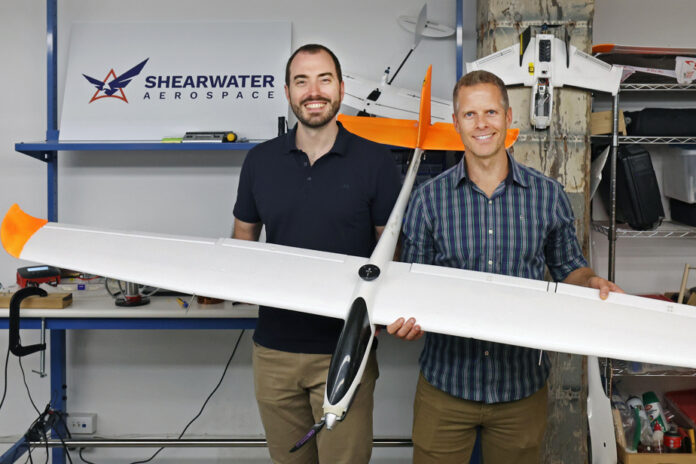Increase the autonomy and speed of drones, in particular by using wind and updrafts, thanks to software called Smart Flight. Using artificial intelligence (AI) to generate the most efficient routes, it can reduce flight time by 25% and increase flight range by 9 times.
It all started around 2014 with the research of Pennsylvania State University professor Jack Langelaan. He and his team worked for five years on solutions to give more autonomy to what are called “unmanned aerial vehicles”, or UAVs in English, in particular autonomous drones.
In 2019, the Montreal incubator TandemLaunch signed a partnership with the University to exploit this technology. In December of that year, Alexandre Borowczyk, holder of a master’s degree in aerospace, aeronautical and astronautical engineering from Polytechnique Montréal, was hired.
“I’ve been working on drones for about a decade,” says Borowczyk. I contributed in Kenya to the development of an emergency drone program, with local talents. It helped them a lot, but it was hard to do, it was very complicated. When I came back to Montreal, I wanted to fix this problem. »
The technology developed in Pennsylvania then entered a second phase of research which allowed “to expand the application”, explains Chad Armstrong. This serial entrepreneur, who holds a bachelor’s degree in electrical engineering from McGill University and an MBA from the international institute INSEAD, was recruited by TandemLaunch in 2021. This is the year Shearwater Aerospace was officially incorporated. Alexandre Borowczyk is the CTO, Chad Armstrong the CEO. The company has its offices in the Montreal neighborhood of Saint-Henri and has five full-time employees.
Shearwater’s software simply helps autonomous drones make the best decisions on their own. It integrates with the existing autopilot system, with two variations called “modules”, Smart Planning and Smart Guidance.
Smart Planning allows you to create the fastest route between two points, which is not necessarily a straight line, taking into account winds, obstacles and no-fly zones. It is estimated that it can then reduce flight time by 25% and energy consumption by 30%.
Smart Guidance, on the other hand, controls the drone which must survey a given area. In particular, the drone uses rising hot air currents to regain altitude without depleting its battery. This use for what is known in English as loitering (“loitering”) allows an 800% increase in autonomy.
Shearwater has five major customers, including Lockheed Martin, the only one with which the association has been made public. Smart Flight is considered today as a product ready for larger scale commercialization, a “Minimum Viable Product” or MVP in the jargon. Shearwater recently launched its Series C round of funding. “But the market isn’t at its best,” admits Mr. Armstrong. We cross our fingers to reach 2 or 2.5 million US. »
For this AI-based product, it is not so much the technology as the regulation that is the main obstacle. “The biggest challenge is the regulation of airspace, especially in Canada,” says the CEO. It limits the use, application and value you can get from the drone. We understand, the goal is safety… So we have worked with other companies in other countries. »
That said, the technological challenge is major, adds Borowczyk. “We are solving a very difficult problem: machines that need to perform very well, that don’t have a lot of computing power in very harsh environments. There are many things that we do not control. »
Smart Flight and its enticing promises of nine-fold range under certain circumstances sometimes inspire skepticism, Armstrong notes. “Especially when you present it verbally and people don’t have the data. Those who understand, who know gliders that can fly without energy for hours and hours, are amazed at the possibilities. »
A third module called Smart Collaboration, which will allow multiple drones to work together for greater efficiency, is currently being tested.
After drones, we want to install Smart Flight on other types of aerial vehicles, such as airships or high-altitude platforms.















